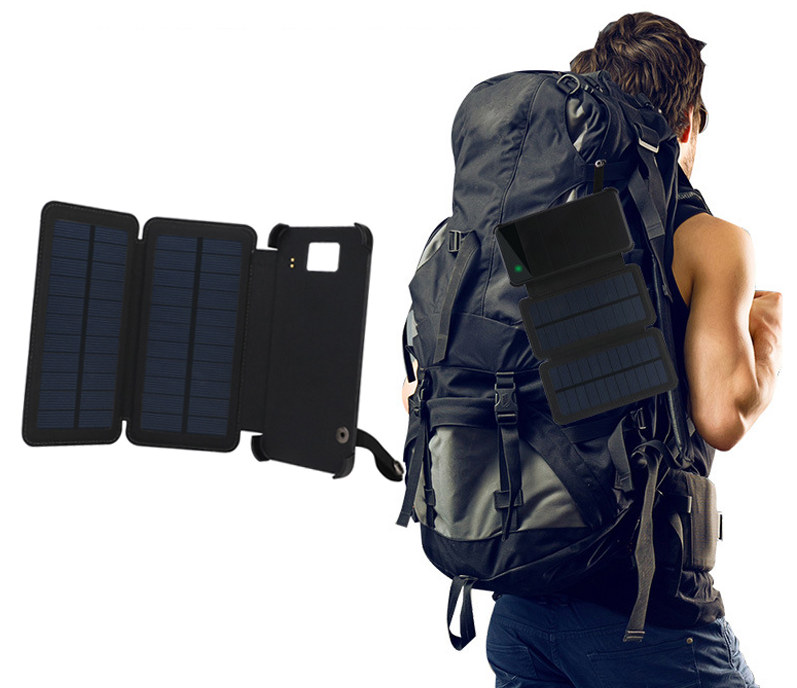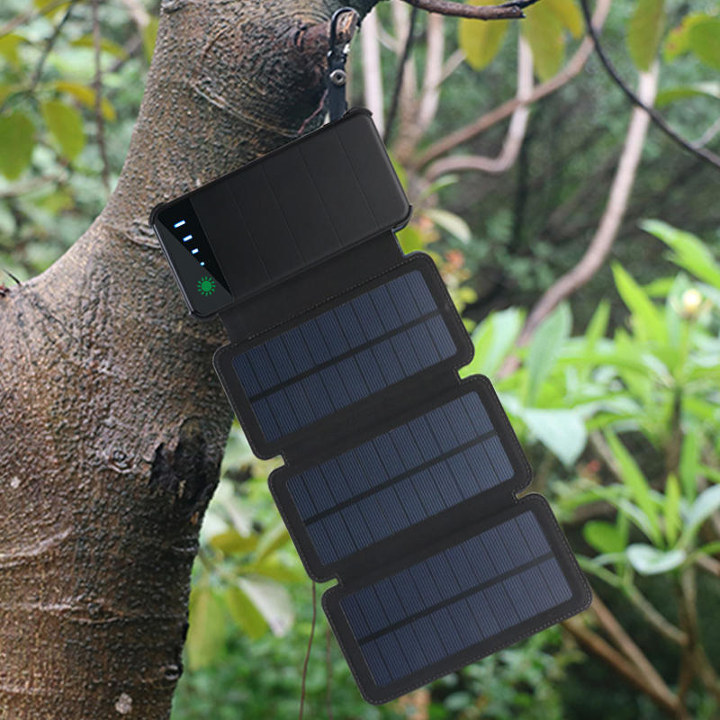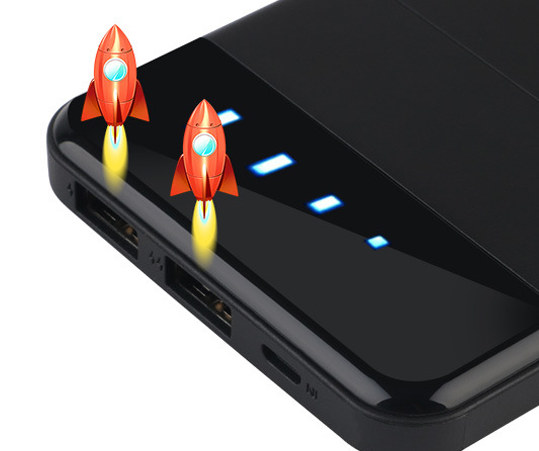A few years ago, I purchased a power bank with a solar panel, but it only came with a 1.5W panel, and I found it took around 10 to 20 days to charge the 8,000 / 10,000 mAh battery in sunny Thailand, allowing me to charge the phone 4 times. So the rate of charge was not quite enough for self-sufficiency, and while I placed the power bank on a roof outdoors, it was not ideal since it was not waterproof, and I forgot to remove it sometimes when it rained, but it still survived for over two years…
Solar power bank are mostly useful if you go outdoors in places without electricity for a few days, or if you have a project that would benefit from being powered that way. Depending on your requirements, a faster rate of charge and waterproofness may be useful features to have and that’s exactly what IPRee waterproof solar panel charger kit offers with 2 to 3 foldable solar panels delivering up to 4 Watts.
Power bank specifications:
- Input – 5V/2.1A via USB type C port, or maybe micro USB? see photo on right side
- Output – 2x USB port up to 5V/2.1A
- Solar Panel – 4W; 88% solar conversion rate (that number does not seem realistic)
- Misc – LED flash light, waterproof (no IP rating mentioned)
- Battery – 2-cell 10,000mAh battery
- Dimensions – 155 x 164 x 15mm while unfolded (for 2-panel model?)
The battery pack is detachable, and connected to the solar panels via pogopins. You can also charge the power bank using a USB charger. The waterproofness looks good around the solar panels themselves, but I’m not so sure about location where the battery itself is held.
IPRee waterproof solar power bank is sold for $19.99 or $24.99 shipped with respectively “two or three batteries”, but they must mean solar panels instead… However, if you don’t really about the charge rate, you may consider a cheaper waterproof model with a single panel for about ~$14, and if you already own a battery, waterproof solar power bank DIY case can be found for around $5 also on Banggood. There are even more choices on Aliexpress.

Jean-Luc started CNX Software in 2010 as a part-time endeavor, before quitting his job as a software engineering manager, and starting to write daily news, and reviews full time later in 2011.
Support CNX Software! Donate via cryptocurrencies, become a Patron on Patreon, or purchase goods on Amazon or Aliexpress







Okay, most of these things end up collecting dust after a use or two. And the reason is efficiency. It all boils down to the charge control. There are three approaches:
1) Linear regulator based. Few components. Cheap. Wasteful.
2) PWM method based. More components. Average efficiency. Some versions allow tuning to your specific panel.
3) MPPT method based. Most efficient. Require a micro controller. Squeeze every bit of juice out of the panel.
Sensationalist Chinese manufacturers go with cheapest option targeting unsophisticated impulsory buyers in the middle of the summer season.
Remember to pay attention to cable length and quality. Do not overheat either cables or lithium battery.
In fact it’s generally possible to do “almost” MPPT by sticking to a lower bound for the cell voltage. Cells quickly deliver the highest open-circuit voltage, and their efficiency falls down around the same corner, more or less a few percent depending on the lighting condition. In practice if you add a control circuit to say that your panel must not deliver less than X and to regulate the output with this, it’s already quite efficient and very close to MPPT, with very few components. I do it on my solar panels with 2 or 3 resistors, a transistor and a zener diode connected to a DC-DC step-up converter. My “12V” panel is optimal when the output voltage remains above 10.6V and doing this allows it to charge depleted 4S batteries without breaking.
The 88% conversion ratio in my opinion is the DC-DC converter. But the 4W theorical output doesn’t seem realistic either. You can suck 3W out of 12.5*12.5cm of the most efficient panels (~22%) in full sunlight, which deliver about nothing in low light. The amorphous silicon panels are lower, between 13 and 17% but deliver power even when the sun is lower or slightly hidden by clouds. For the surface you have above, and the small parts linked together I hardly imagine anything above 2W. For them it’s easy, nobody checks, and even when you check, you systematically think “OK it’s not the brightest sun today”. It’s very likely that your other 1.5W one was not delivering 1.5W either 🙂
If your 1.5W is the same as the waterproof one on the banggood link it definitely cannot be 1.5W 🙂 The aperture surface is roughly 1/3 of that of a 3W panel, and roughly 1/3 of this surface is covered with cells. So in the best case you’d have about 0.3W there before conversion losses. This device is fantastic, it relies on the battery to deliver the power you’re supposed to measure, so there’s no way to prove it wrong 🙂 Oh and given its size it’s clear that the battery capacities they’re suggesting will indicate fake batteries as well, that can take the blame for the slow charge and low retention. That’s an excellent business model!